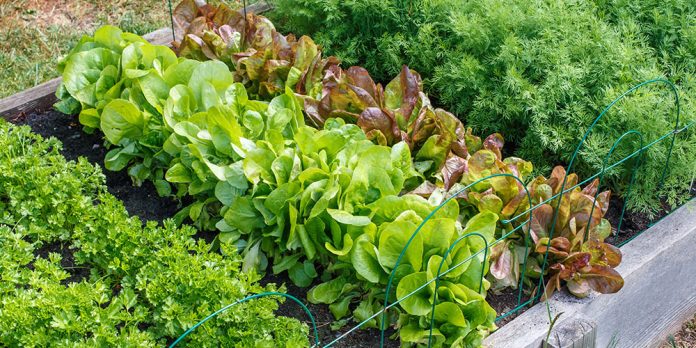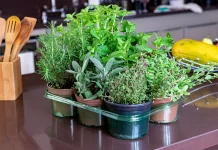Starting a vegetable garden is a rewarding endeavor that allows you to grow your own fresh produce while connecting with nature. Whether you’re a beginner or an experienced gardener, having a clear plan will help you organize your space, choose the right plants, and maintain your garden effectively. In this guide, we will walk you through the steps to create a successful vegetable garden plan, from choosing a location to deciding what to plant, ensuring that you maximize your harvest and enjoy the fruits (and vegetables) of your labor.
Table of Contents
Toggle1. Choosing the Right Location
The first and most important step in creating a vegetable garden is selecting the best location. The right spot can make or break your garden’s success. Consider the following factors when deciding where to plant:
- Sunlight: Most vegetables need at least 6-8 hours of direct sunlight per day to thrive. Choose a location that gets plenty of sunlight throughout the day.
- Soil Quality: Healthy, well-draining soil is essential for strong plant growth. If your soil is heavy with clay or sandy, you may need to amend it with compost or organic matter.
- Access to Water: Ensure your garden is close to a water source, such as a hose or rain barrel. Vegetables require consistent moisture, especially during hot summer months.
- Wind Protection: Try to choose a location that is sheltered from strong winds, which can damage young plants or dry out the soil.
2. Preparing the Soil
Once you’ve chosen the perfect spot for your garden, it’s time to prepare the soil. Healthy, nutrient-rich soil is the foundation of a productive vegetable garden. Here’s how to get your soil ready:
- Test the Soil: Before planting, test your soil to determine its pH level and nutrient content. Most vegetables prefer slightly acidic to neutral soil (pH 6-7). You can purchase a soil testing kit or send a sample to a local extension service.
- Amend the Soil: Based on the results of your soil test, amend your soil as needed. Add compost, well-rotted manure, or organic matter to improve soil texture and nutrient content. If the soil is too acidic, you may need to add lime; if it’s too alkaline, sulfur can help lower the pH.
- Tilling and Aeration: Loosen the soil to a depth of about 12 inches to allow roots to grow freely. Use a garden fork or tiller to break up compacted soil, and remove any rocks or debris.
3. Deciding What to Plant
The next step in planning your vegetable garden is deciding which crops to grow. Consider your climate, the growing season, and the types of vegetables your family enjoys eating. Here are some tips to help you choose:
- Climate and Hardiness Zones: Look up your region’s USDA Hardiness Zone to determine which vegetables grow best in your area. Choose crops that are suited to your climate and growing season length.
- Personal Preferences: Focus on vegetables that you and your family like to eat. Growing what you enjoy ensures that you’ll be motivated to maintain the garden and use the produce.
- Seasonal Crops: Divide your planting into cool-season crops (like lettuce, spinach, and peas) and warm-season crops (like tomatoes, peppers, and cucumbers). This allows you to extend your harvest and make the most of your growing season.
- Space Considerations: Some vegetables, like zucchini or pumpkins, require a lot of space to spread out. If you have limited space, focus on compact crops such as carrots, radishes, or leafy greens, or consider vertical gardening techniques like trellises for vine plants.
4. Planning Your Garden Layout
After selecting your vegetables, the next step is to plan the layout of your garden. A well-organized garden maximizes space and makes it easier to care for your plants. Here are some layout strategies to consider:
- Raised Beds vs. Traditional Rows: Raised beds are an excellent option for small spaces or areas with poor soil. They allow for better drainage and make it easier to control soil quality. Traditional rows are ideal for larger plots, offering plenty of room for root development and air circulation.
- Companion Planting: Certain vegetables grow better when planted together. Companion planting can help deter pests, improve soil health, and increase yields. For example, plant basil near tomatoes to repel insects, or marigolds to keep aphids away.
- Crop Rotation: Plan to rotate crops each season to prevent the depletion of soil nutrients and reduce the risk of disease. Avoid planting the same family of plants (e.g., tomatoes, peppers, and eggplants) in the same spot year after year.
5. Planting and Caring for Your Vegetables
Once your garden is planned, it’s time to start planting. Whether you’re planting seeds or transplants, follow these tips for success:
- Planting Depth and Spacing: Each vegetable has specific requirements for how deep to plant the seeds and how far apart to space them. Follow the recommendations on seed packets or plant labels to give your vegetables room to grow.
- Watering: Vegetables need consistent watering, especially during the first few weeks of growth. Water deeply and evenly, aiming for about 1 inch of water per week. Avoid overhead watering, which can lead to fungal diseases—drip irrigation or soaker hoses are ideal.
- Mulching: Apply a layer of organic mulch, such as straw or wood chips, around your plants. Mulch helps retain soil moisture, suppress weeds, and regulate soil temperature.
- Fertilizing: Feed your vegetables with a balanced organic fertilizer throughout the growing season. Fast-growing vegetables, like tomatoes and corn, may benefit from additional nutrients during peak growth periods.
6. Dealing with Pests and Diseases
Unfortunately, pests and diseases are an inevitable part of gardening. However, there are many natural ways to protect your vegetable garden:
- Preventative Measures: Keep your garden clean and free of debris, and practice crop rotation to minimize pest infestations. Planting companion plants like marigolds or nasturtiums can repel harmful insects.
- Organic Pest Control: For common pests like aphids, caterpillars, or slugs, try using natural methods such as neem oil, insecticidal soap, or diatomaceous earth. Hand-picking pests or using row covers can also protect your crops.
- Disease Management: Keep an eye out for signs of plant diseases like powdery mildew or blight. Remove and destroy infected plants to prevent the disease from spreading. Ensure good air circulation between plants and avoid overhead watering to reduce the risk of fungal infections.
7. Harvesting and Enjoying Your Bounty
The most exciting part of gardening is harvesting the fruits of your labor. Knowing when and how to harvest each vegetable will ensure the best flavor and quality:
- Timing: Harvest vegetables at their peak ripeness for the best taste. For example, pick tomatoes when they’re fully red but still firm, and harvest zucchini when they’re about 6-8 inches long.
- Proper Techniques: Use garden shears or a sharp knife to cut vegetables from the plant, rather than pulling or twisting them off, which can damage the plant.
- Preservation: If you have an abundant harvest, consider preserving your vegetables by canning, freezing, or drying them to enjoy later in the year.
Creating a vegetable garden is a fulfilling and rewarding experience, especially when you take the time to plan it well. By choosing the right location, preparing the soil, selecting appropriate crops, and organizing your layout, you can set your garden up for success. Remember to care for your plants by watering, fertilizing, and protecting them from pests and diseases, and soon you’ll be able to enjoy a bountiful harvest of fresh, homegrown vegetables. Happy gardening!








